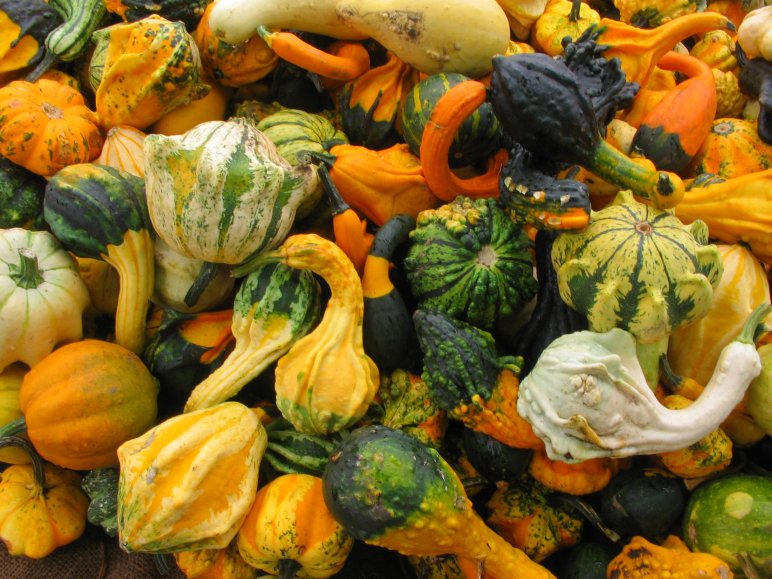What is a gourd?
Gourds, along with cucumbers, squash and melons are in the cucurbitaceae family. Gourds are one of the most diverse and unusual fruits in the world. The gourd vine is robust, easy to grow and productive. When properly cured and prepared, the fruit from the gourd plant have many practical and artistic uses.
There are hundreds of species of gourd plants. They have large leaves, long curling tendrils and fruits that vary greatly in size and shape. Gourds are one of the oldest cultivated crops. Their uses during prehistoric times were recorded on cave wall paintings. Before there was pottery or basket weaving, gourds were used as vessels to store precious water and food. Native American, South American, African, and Asian cultures all used gourds for tools, utensils, musical instruments and ceremonial objects. In the early eighteen hundreds, the Haitian treasury used gourds as a temporary form of currency until a gold backed currency was established.
Growing Gourds.
Gourd plants are tender annuals that thrive in the long, hot summers. Some gourds require over one hundred and twenty days for their fruit to mature, so starting the seed indoors in early spring is beneficial. Start seeds in individual containers like peat pots since the roots will not tolerate disturbance during transplant. Plant the seedlings in a sunny, open area with lots of room to spread. If soil drainage is suspect, incorporate compost to the soil, and plant the seedlings on a mound of soil. Mulch the new plants to conserve moisture and reduce weeds. Trellising the vines can help conserve space and make it easier to harvest the fruit. Regular watering and fertilizing will increase the production and quality of the fruit. Gourds are generally easy to grow, although mildew and cucumber beetles can sometimes be a problem.
Drying and Curing Gourds.
Gourd fruit should be harvested in fall before the first frost. Harvest only the mature fruit, handling them carefully and discarding any fruit that is bruised or immature. Wash the fruit in soap and water using a soft brush and drying them with a cloth. After washing and drying the fruit, place them in a dark, dry, well-ventilated area, making sure they are not touching. Check them every day for the first two weeks, and discard fruit that show decay or softening. After that, check them once a week discarding fruit that are rotten. Continue drying the gourds until you can hear the seeds rattling inside; this can take up to six months depending on the type and size of the gourd. When the gourds are dried, they will have some scars and blemishes which add character and enhance their natural beauty.
Gourds are a diverse and interesting fruit with a rich history. They are easy to grow in and provide a bounty of fruit in a variety of shapes and sizes. The practical and creative uses for gourds are limitless. Try growing your own birdhouse, maracas, or even an artistic masterpiece

